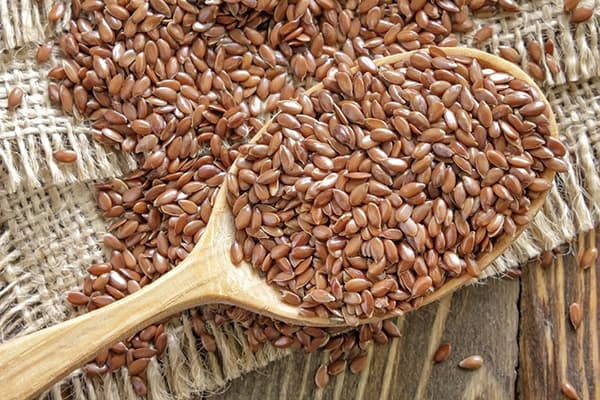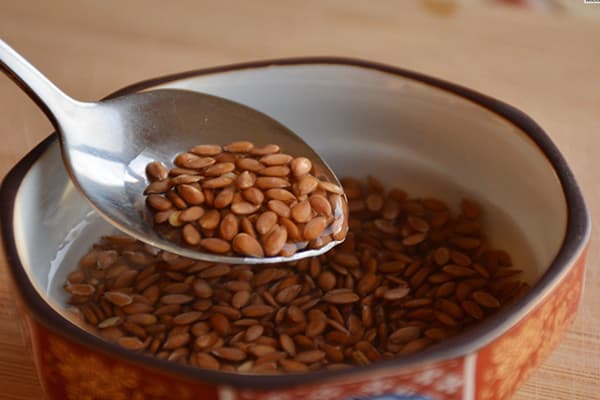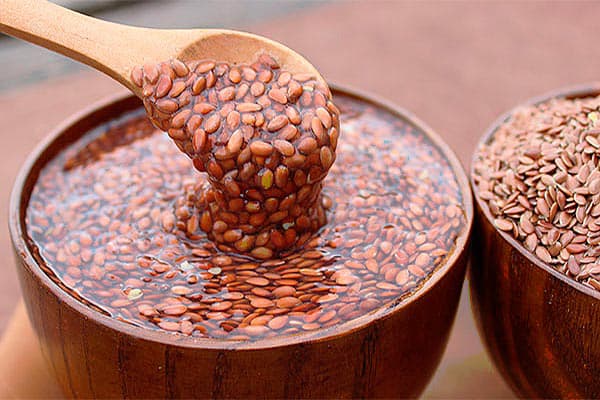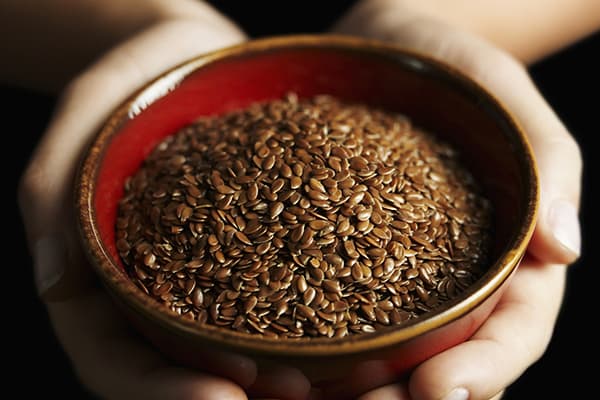How to properly soak flax seeds for eating?
Many people are interested in the question: what is the correct way to eat flax? Looking ahead, we emphasize that soaked seeds are absorbed better. In water, phytic acid, which binds microelements, leaves them.

Do I need to soak flax seeds?
Flax is the oldest spinning and oilseed crop. It was cultivated back in the Aegean period. The stems of the annual plant Linum were used to obtain fiber for making clothing. The seeds were cold pressed into oil. Remarkably, it was mainly used for technical purposes, and not as a nutritional supplement. Linseed oil was used in the manufacture of waterproof fabric, paint, drying oil, and varnish. In the Middle Ages, artists used it to add shine to paintings.
Since ancient times, flax seed has been known as a remedy for inflammation of the mucous membranes. Hippocrates described the recipe in his writings. He recommended pouring boiling water over the seeds to get a healing thick mucus. When consumed on an empty stomach, it reduces inflammation in the esophagus, promotes the healing of stomach ulcers, coats the mucous membrane and relieves pain. The same mucus can be used for cosmetic purposes. It deeply nourishes the skin and smoothes out wrinkles.
The use of flax seeds for food is more diverse:
- Whole seeds are added to baked goods. They are pre-roasted to impart a nutty flavor.
- Crushed seeds are sprinkled on ice cream, mousses, and decorated with various confectionery products.
- For dietary nutrition, crushed dry seeds are used, which are washed down with plenty of water. Or the seeds are soaked. Both options are considered correct.
In fact, the idea of soaking seeds before eating is relatively new. The impetus was research that was conducted in 2004 in Europe. Scientists have found that phytic acid, which is found in all seeds, legumes and nuts, binds minerals (calcium, zinc, iron, magnesium), proteins, starch and prevents their absorption in the human body. Fortunately, it can be easily neutralized with regular cold water.
How to soak?
Water is needed to neutralize the phytic acid in flaxseed. Definitely cold or room temperature (not boiling water). The whole point of the manipulation is to awaken dormant seeds, that is, to germinate. When they are about to germinate, they secrete a special enzyme - phytase. It is this that destroys phytic acid and provides flax with easily digestible phosphorus.
So how do you soak seeds for eating?
- Place the seeds in a glass bowl.
- Fill with purified cold or slightly warm water in a ratio of 1:2 (for example, 1 cup of seeds and 2 cups of water).
- To better neutralize phytic acid, you can add 1 teaspoon of sea or Himalayan salt.
- Place the bowl in a dark, warm place and cover with a thin, breathable cloth (towel, gauze).
- Drain the water and rinse the seeds several times. The drained liquid will contain phytic acid.
It is very convenient to soak flaxseeds with a reserve. For storage, they are dried in the oven with the door ajar at minimum temperature.
How long should flaxseed be soaked?
Different types of seeds, nuts and legumes have different soaking times.For example, almonds and hazelnuts can be safely left in water overnight, that is, for the entire 8–12 hours. Flaxseed is the most unpretentious in this regard - to increase its digestibility, soaking for half an hour is enough.
Benefits of a Dietary Supplement
Flax seed has a general healing effect on the body. Its benefits are due to its nutritional value, mild laxative and anti-inflammatory effects. 100 g of product contains 1.64 mg of vitamin B1, 392 mg of magnesium, 20 g of dietary fiber, 22.813 g of Omega-3 and 5.91 g of Omega-6 fatty acids, which allows you to completely replenish the daily requirement. The seeds are rich in vitamins B5 and B9, calcium, phosphorus, iron, zinc, copper, and manganese.
It is recommended to include flaxseeds in your diet for health purposes:
- increasing immunity;
- improved digestion;
- normalization of intestinal function during constipation,
- hair strengthening;
- beautiful skin color;
- proper metabolism and weight loss;
- reducing swelling;
- elimination of dry eye syndrome, dry skin;
- strengthening the nervous and cardiovascular systems.
Flax seeds are taken in strictly limited quantities - no more than 2 tablespoons per day. Otherwise, the dietary supplement will cause diarrhea. For flatulence and bloating, the daily intake of seeds is reduced to 1 teaspoon.
Undoubtedly, it is healthier to eat flax that has been previously soaked in water for half an hour. A simple manipulation helps get rid of phytic acid and thereby improve the absorption of vitamins and minerals. But in fairness, we note: phytic acid is not so harmful.Research conducted in the 80s and 90s showed that it has antioxidant, anti-inflammatory and anti-cancer properties, and reduces the risk of heart disease and kidney stones. The allowed norm is 400–800 mg of phytic acid per day. It turns out that it is impossible to unequivocally recommend only soaked seeds for consumption. It is correct to eat them both ways. Start from the desired effect and eat flaxseeds for your benefit!




I've been adding these seeds everywhere for years. But I didn’t even know that they needed to be soaked. No one had talked or written about this before. Well, now I’ll soak it and then dry it. Thank you
Well, if phytic acid is so useful, then why drain it?? I also drink this water, and by the way, it works as an excellent remedy for heartburn, I just drink it separately from the seeds. The seeds also relieve heartburn. Try it!!